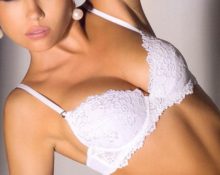There are many details that we can see every day, but do not think about their origin and meaning. In this article, we will consider not only the definition of a pocket, but also learn its history.
You should first know what this product is. Several definitions can be distinguished. So, the dictionary states that this is a piece of clothing, presented in the form of a bag for carrying small things, a scarf, money. It can be directly sewn in or sewn onto trousers, coats and so on. In addition, in appearance it usually looks like a quadrangular container. 
The history of the pocket
The appearance itself occurs in the last third of the seventeenth century. Therefore, it cannot be said that the described hole is ancient. So, for the first time it can be seen as a bag in which coins were placed. However, it was not sewn directly to the main item. Used as an addition to a woman's belt under a skirt. For men, the notch was attached over the pants.But to ensure accessibility, special cuts were created.
ATTENTION! The pocket became an independent thing under Louis the Fourteenth.
If we delve into the past, it makes sense to mention the fifteenth century, when the described item was considered a women's accessory for a full-fledged costume. Most often the material used was flax. The top was decorated with decorative inserts, multi-colored embroidery, and stitching.
For more noble families, velvet or satin were used - expensive fabrics. After the use of this product extended to men, women began to develop the creation and use of bags. Even then, an important element of the reticule was intended for storing small items.
In modern times, sewing sections into everyday style gradually became fashionable. And hinged recesses were preferred exclusively by the elderly population, thereby showing society an infusion of traditional views. In the modern world, you can notice the presence of most things, as sometimes it is considered an integral part.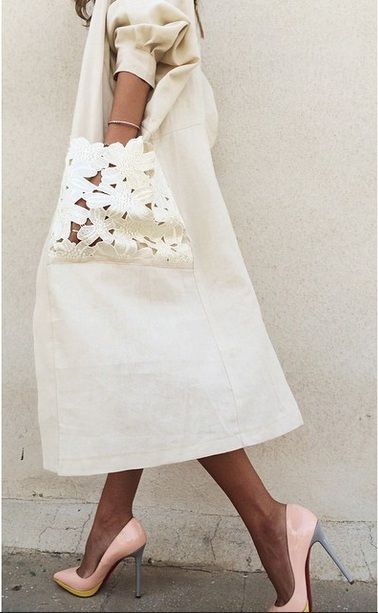
Types of pockets with photos
There are only three varieties: overlay model, in seams and slotted. Thus, each of them can also be divided into subtypes. First, let's look at the options for implementing the first of the above.
Invoices are perhaps the most common, since they are the ones that are easy to implement. They are sewn on the outside of the material. As for the shape, it can be either square, rectangular, or all unusual shapes. Therefore, its subtypes are presented below:
Simple option rather, it is used on denim fabrics, as well as on models in which there is no lining.

Lined needed to complement the image of a dense and thick product. Examples include jackets and various jackets.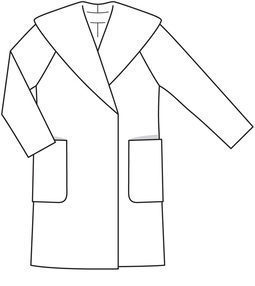
With valve often supplied to men's clothing as a decorative element.

"Briefcase" created due to a large number of dimensional folds.

The element consisting of seams also has several types:
Simplest. It's really easy to cut and then sew in. In fact, it should be indicated using transverse marks.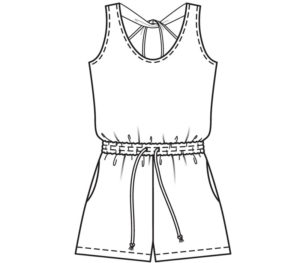
With a zipper. It has similar features to the previous version. However, there is lightning involved.

Notch with cutting barrel can be done quite quickly. And their presence is often found in skirts or shorts. To add a decorative touch, it is recommended to use a flap.
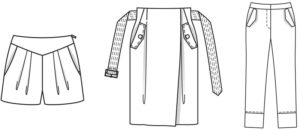
The slotted representatives are not particularly varied in shape: diamond-shaped, square, oval, rectangular. However, the direction turns out to be absolutely any: vertical, horizontal, inclined, and so on. It all depends on the creator and his imagination. And so, for studying it is advisable to know the following aspects:
The most common ones are equipped with a zipper. So, they can be found almost anywhere and everywhere. But more often on outerwear: windbreakers, raincoats, coats. The type of execution should also be mentioned here. "in frame". Its difference from others is that the main material has to be cut through.

Recesses with a leaf (built-in section that forms the line) are available: with set-in ends and with stitching ends.

Blende is practically no different from an ordinary representative. You can notice that this is a deception, but if you try to stick your hand into it.
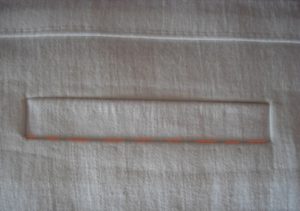
"Into the crack."

"In the edge" almost all parts are specially hidden on the reverse side.From the front, only the entrance is visible - a processed cut, which is created by one or two traditional facings. The direction of the pattern can coincide directly with the hole. Thus, the function of additional decor will be performed, of course, depending on the fabric and its color.



 1
1


